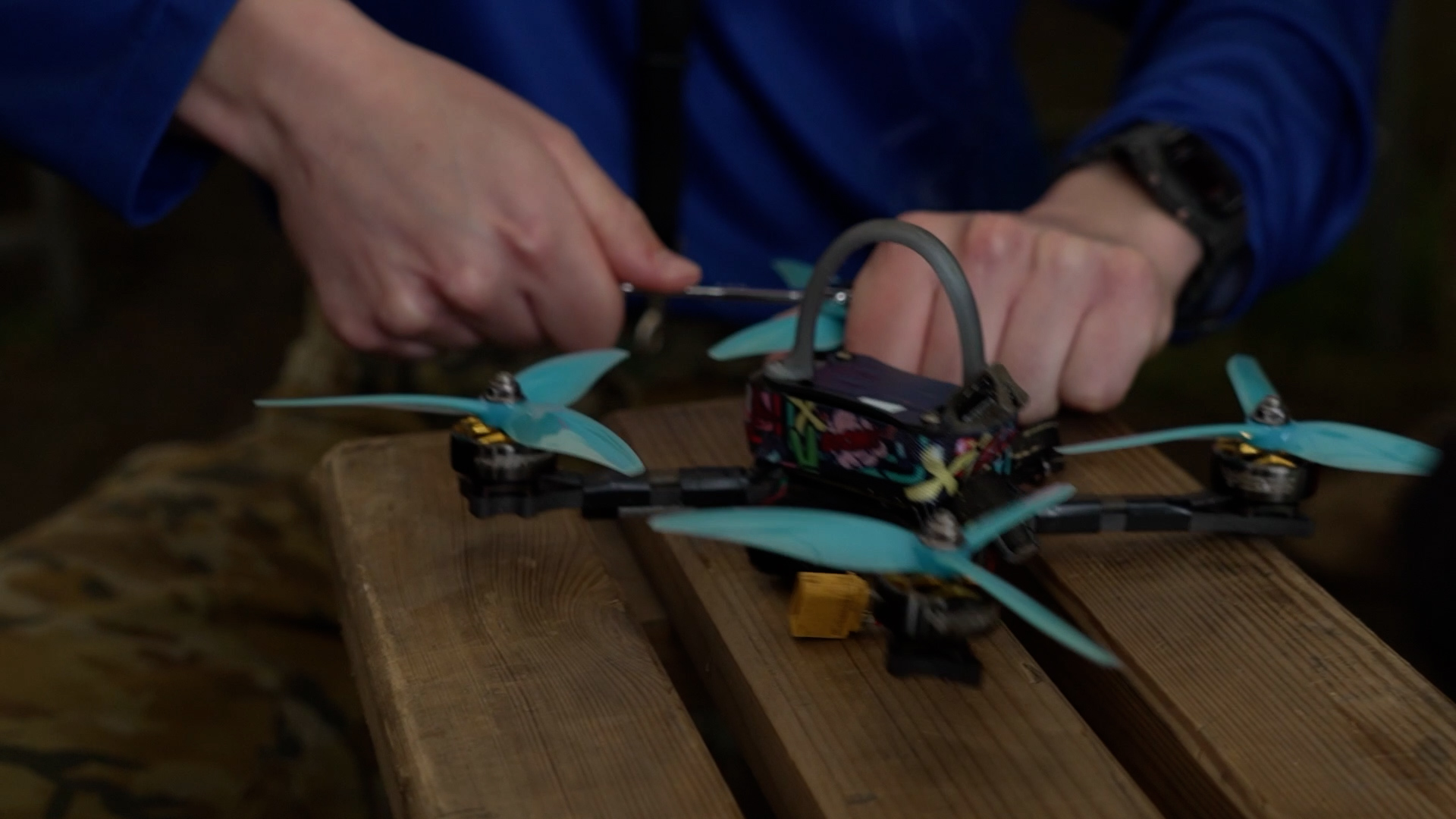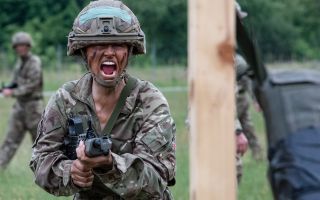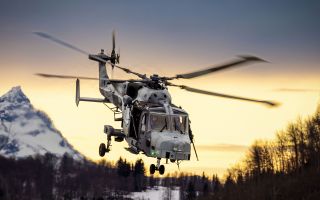From high-speed thrills to frontline skills: Drone racing takes off at Sandhurst
Drone racing has officially joined the ranks of British Army sports – and at the Royal Military Academy Sandhurst, military pilots from around the world have been pushing themselves, and their drones, to the limit.
At the centre of it all is Sergeant Luke Crossley, the UK's fastest military drone pilot.
A Royal Engineer, he says the technical demands of the sport come naturally to soldiers like him.
- AI-powered swarms that pick their own targets mark the future of drone warfare
- Hauling kit and an eye in the sky - Royal Marines and Navy drones now operational
- Inside the Army's experiment to make Sandhurst better for female officer cadets
"I try and fly about two to three times a week… that's the intensity you need to remain competitive," he explains.
Drone racing, he adds, "beds into the Engineers pretty well because we do demolitions, bridge building, we've got electrical trades and all that good stuff… it's right there with what we naturally do".

Built for British conditions
This year's Sandhurst tournament marked a major milestone for military drone racing, combining technical skill, lightning-fast reactions, and a fair bit of nerve.
Lieutenant Colonel Carl Eze, founder of the British Army Drone Support Association, says the tight, twisting track was designed to challenge even the best.
"We've got drones which can go over 100 miles an hour, between 0-60 in 0.3 seconds… but here we built a tight, small technical track… in Australia and the US they've got big open tracks, but this is a European track – it plays more to our advantage."
The 'spaghetti' section
That technicality pushed racers like Sergeant Reuben Ellett to the limit.
He said: "The course is an absolute challenge… the section at the back called the Castle is quite spaghetti.
"You have to back off the speed, twist through the turns… it feels like diving through not just gates, but maybe as if you were going through the woods."

Crashes and quick fixes
Crashes are all part of the sport, so repairing your drone mid-competition is essential. Sgt Ellett says the key is to "be a little bit of a tinkerer… what's going wrong with my drone? How do I fix it, what parts do I need? And how do I get it cobbled back together?"
Luke Crossley also knows how quickly things can go wrong.
"I got off the blocks first… I wanted to get away from the pack because that's where you can crash… usually there's only one survivor," he said.
"Unfortunately, I was at the front of the pack, I got midaired, and I was the one that didn't survive."
Aussies lead the field
The Australian Defence Forces – the first military team to officially recognise drone racing as a sport – dominated the competition, with three pilots in the finals and the overall win.
"The high you get off racing is unmatched," said Private Hamish "Mish" Glover. "Once Australia had three in the finals, it was about having fun. Either way, Australia won… it feels amazing."

Brits closing the gap
Despite the loss, the British team believe they're catching up fast.
"The Aussies are incredible… they train hard and it pays off," said Sgt Crossley. "I've been racing just over a year and they know I'm hard on their heels… with more practice, I'll get them."
He also believes the mental side is as important as skill.
"Half of it is psychological. If you start shaking even just a little bit, that motion is going to feed straight into the drone... so it really is 50% skill, 50% emotion and keeping rock solid."
Beyond the racecourse
For the Army, drone racing isn't just about sport. The same precision, technical know-how, and calm under pressure could give soldiers the edge on future frontlines.









